Hi. I’ve been watching my own latest racing vids and noticed that I tend to move (a lot) my head on every bend. How much of that would affect my driving and the centre of gravity of the chassis?
I checked several WSK races and the top guys don’t do it as much. They stay straight. I uncounciously do it and not liking it at all.
Also, it seems they keep their arms pushing towards the front of the kart. Is that right?
Any good advices?
Oh boy here we go, this is one of my favorite topics.
Simply put, posture and body movement is probably the most important aspect of kart driving. The driver is the largest piece of ballast on the whole kart, often accounting for nearly 50% of the total weight. So of course where you place that ballast has a huge affect on the handling of the kart.
In order to minimize any ill handling from your body position, it’s important to have a very stable posture. The drivers you watch in WSK races are all firmly back in the seat, with their arms straighter. Having your shoulders back in the seat provides a much more direct weight transfer from the seat to the seat stays, and in turn, to the rear axle. Having strong arm positioning will help keep your steering inputs much smoother and more predictable. Your emphasis should be on pushing the wheel in a turn with your outside arm, rather than pulling with your inside arm. This will force your body back into the seat further and press more weight through the seat stays. Also, having your arms at a straighter angle will eliminate the tendency to over-drive the kart. When your arms are straighter, you are steering more with your shoulders rather than your biceps. Your biceps have more leverage and therefore it’s much easier to aggressively turn the wheel. Using your shoulders rotates the wheel in smaller increments, eliminating choppy steering inputs.
When I drive, I tend to keep my shoulders firmly pressed on the outside of the seat, transferring as much weight as possible to the rear axle. This will help plant the outside rear tire and lift the inside rear. My head generally stays level with the racing surface. Here are some reference photos:
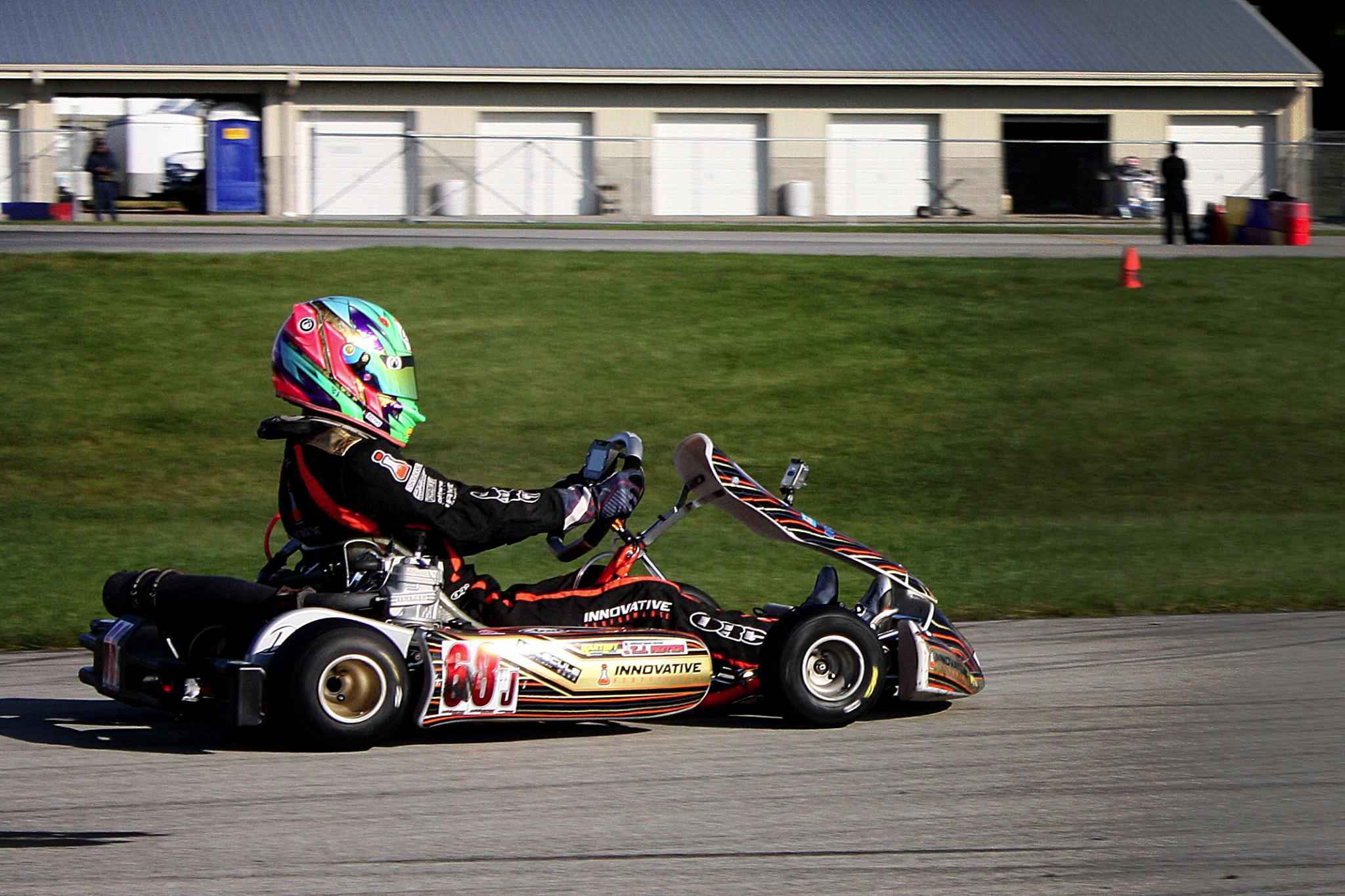
Here you can see how straight my arms are, and how my upper body is already tensed up, ready to lean to the outside for the next right hand corner.
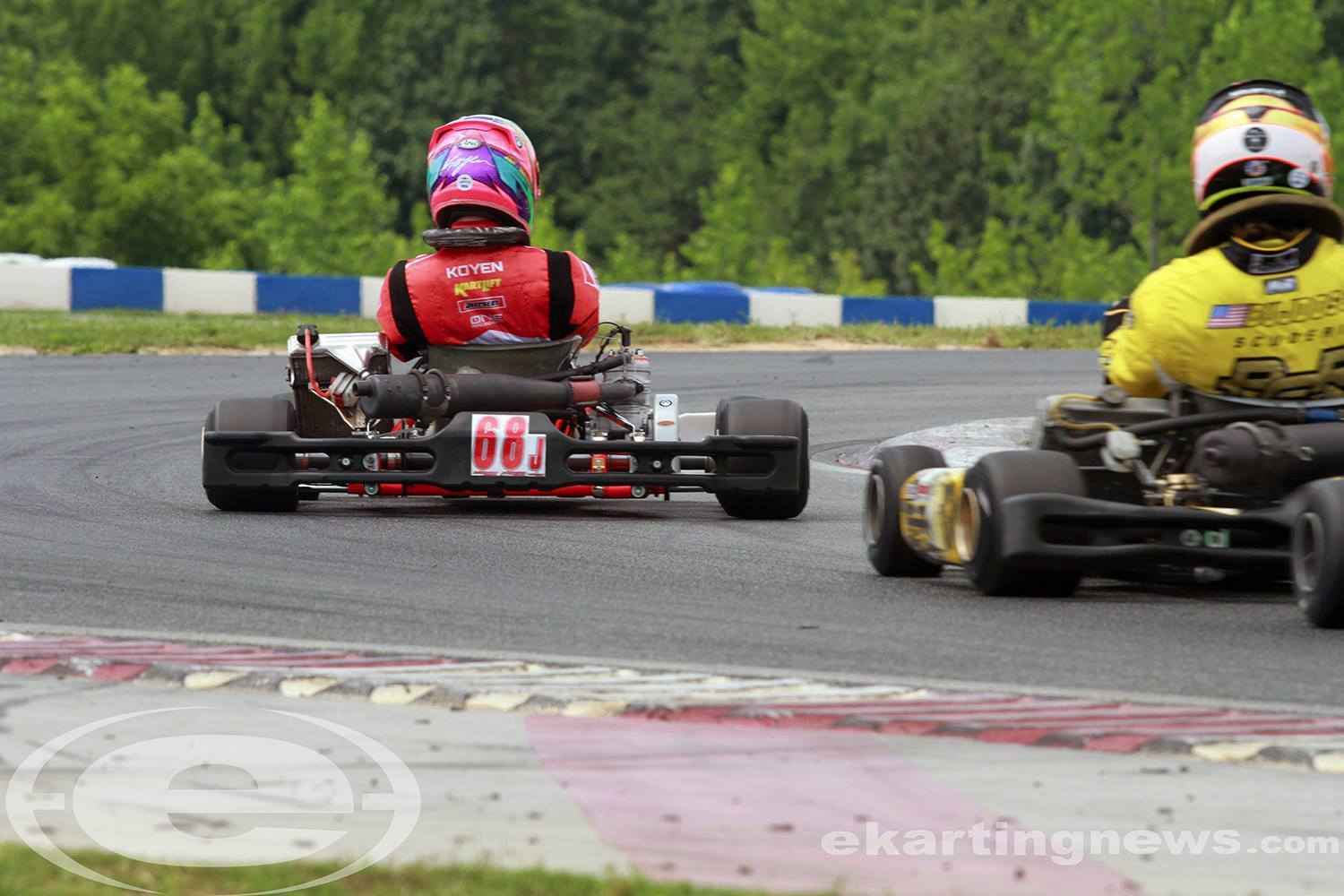
In the above photo you get a really good look at how my shoulders are leaned to the outside of the seat, letting the inside rear wheel unload.
I was coaching at the last Route 66 Series race in New Castle, and one of our Yamaha drivers was struggling with driving posture. He’s tall so any issue he has with posture is amplified with his high center of gravity. One of the tricks I tell drivers who are struggling to be smooth on the wheel is to move their hand positioning to the top of the wheel, around 11 and 1. This will force you to drive with your shoulders more and slows down your steering inputs. On top of that, I also had this driver switch from pulling on the wheel to pushing on the wheel and forcing himself back into the seat to transfer weight. With these two changes, no adjustments to the chassis, we picked up .5 in one session. The kart handling went from too loose to completely neutral. And that was all from driving posture and smoothing out his wheel inputs.
This is one of those things that I still have to work on. I used to have a forward leaning posture a bit as a bad habit from indoor karting. Now, I always try to make sure that i keep my back against the seat.
Changing my seat position also helped with some of this naturally as well, I found.
I had to re-learn a lot what TJ has mentioned here, as prior to soft chassis it wasn’t as critical, at least to me. Then again, I was a lot shorter as well, worked the chassis less.
If you find yourself flopping around in your torso or head, you’re probably not preparing for the corners like TJ mentioned. Next time on the track, try pushing on the wheel as you enter the corner. If you’re near the limits of the kart’s performance, it really is a noticeable difference how stable the kart is through the corner, and how much grip it seems to have in the rear.
What about head tilting? I have found that sometimes I lean my head into a turn, but I don’t think it’s ever that bad. I never knew whether it’s good or bad, but I assume keeping your posture as straight as possible is ideal?
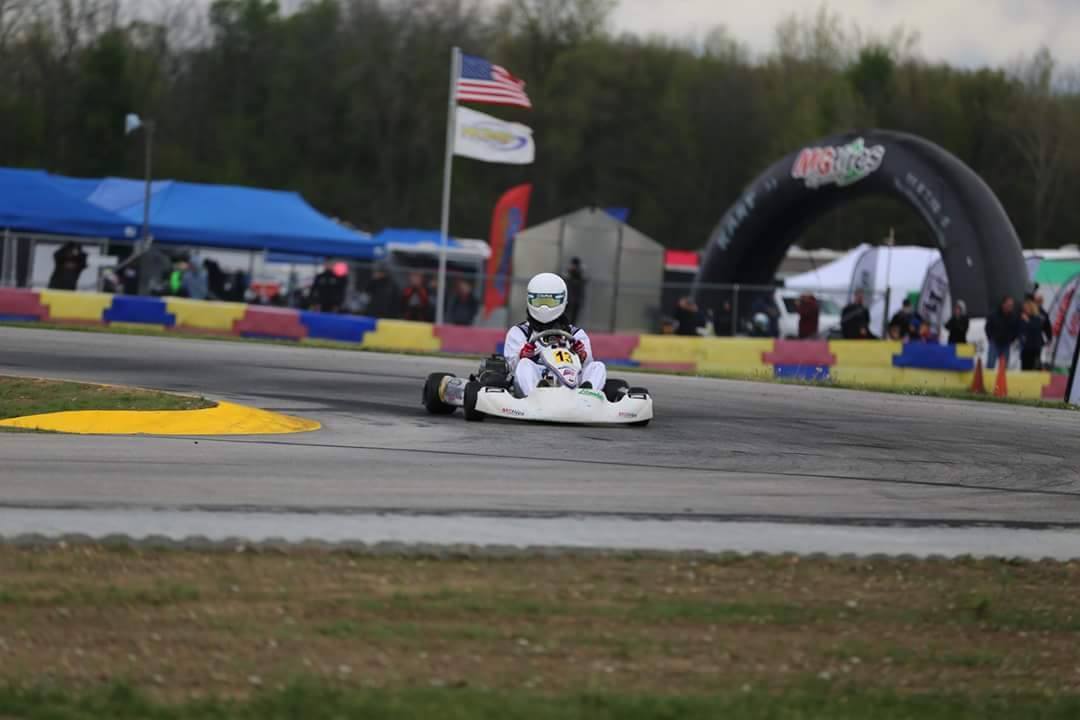
This seems to be correct, right?

Whereas it looks like I’m leaning into the turn with my head more here
I would imagine your head tilting isn’t as big of a deal. I don’t think tilting your head really changes the weight distribution.
The driver behind you in the bottom photo is who I was coaching. Clearly he forgot his lessons on that corner…
I wasn’t so much thinking of weight distribution but vision. As you tilt your head you limit the amount of track ahead that you can see. I never thought of it until I put that visor strip on and suddenly found it a lot harder to track where the exit point was on the track for me.
I also just don’t have the core strength to pull myself into a corner like that even if I tried.
Great inputs!!!
So, better rotating the head, looking ahead than tilting?
Yes, the further ahead you can look the better, so the more you can naturally keep your head level while rotating has always been better as far as I’m aware
All good advice with keeping your body stable and solid.
With tilting your head, I think you can let your head do its thing without worrying too much.
However, there are very successful drivers who do move their body, and lean into corners - we call it the shoulder drop…
Here’s a snippet from my book showing Elliot Harvey doing his shoulder drop thing. He’s a front running driver here.

Now, writing this made me realised I always wanted to mention another driver in my book whom I’ve worked with, but I forgot to add! Anyway, he had his own body posture style that certainly worked for him… another Harvey (but no relation)
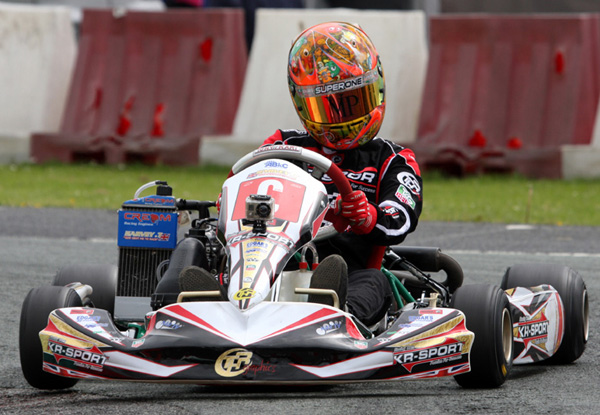
Tom Harvey would lean away from the corner, on some corners to an extreme. He was extremely fast, and was on for a win at the Rotax World Finals until something went wrong, I can’t quite remember, but anyway the point is:
If you move your body around, make certain you are not upsetting the dynamics of the kart, and that you are working with the kart in some fashion. Also, make certain you are totally consistent, both the above drivers do exactly the same thing lap after lap. But there is room for doing your own thing, there is no exact formula that I’m aware of.
So as long as you can drive the kart, feel free to move however feels natural to yourself?
I also wonder if you can tune to compensate for some of the leaning if you have to. If the driver leans into a turn, would it be good to try to get the kart to lift more to counteract the extra weight over the rear wheel?
Great post by Mr. Dove.
I think Terence is saying that keeping your body stable and solid and not affecting the kart’s attitude is most important. So a massive inside lean, even if that’s natural for you, may upset the kart’s ability to work properly and that wouldn’t be good. But little differences in posture is okay. I see guys who have been driving with horrible posture for many years because “that’s what’s comfortable” and its very clear that their inability to put their body weight into the correct parts of the seat is affecting how their karts handle. The common one is guys who are massively sliding the back end and leaning into the slide, which is actually making it worse.
The first image Terence posted of Elliot Harvey shows a slight lean, but you can tell he’s working WITH the kart’s action. It’s also very likely that he is still applying plenty of pressure on the top outside of the seat as he appears to be fairly tall.
Whenever I think of posture I think of American driver Luke Selliken:
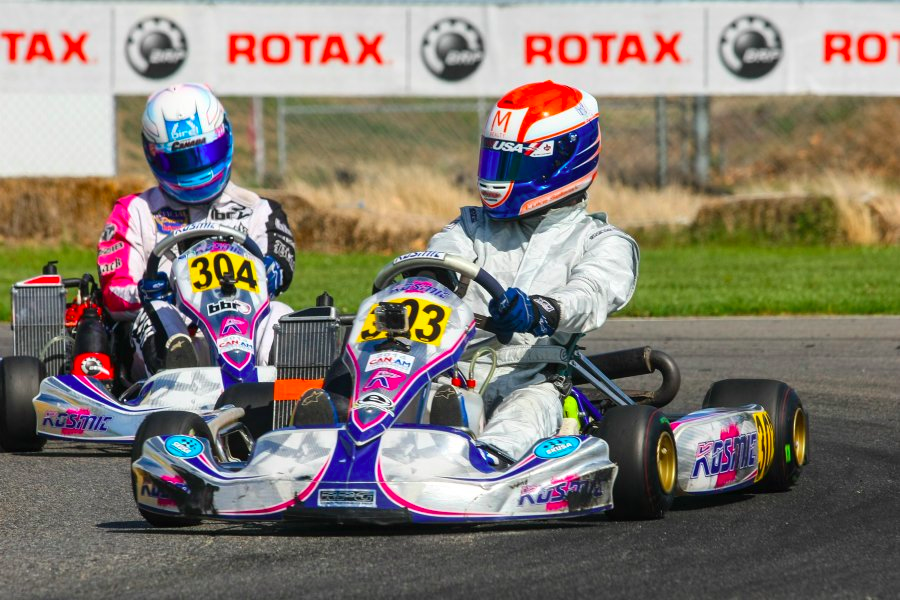 http://ekartingnews.com/wp-content/uploads/2014/04/CanAm-R1-Luke-Selliken.jpg
http://ekartingnews.com/wp-content/uploads/2014/04/CanAm-R1-Luke-Selliken.jpg
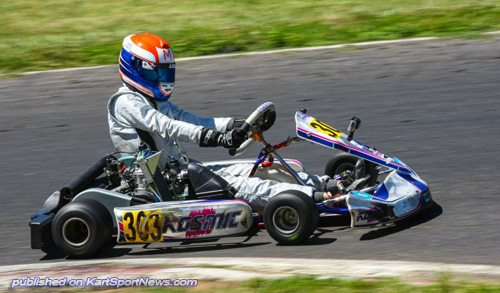 http://www.kartsportnews.com/content2014/CanAm-R3-Luke-Selliken.jpg
http://www.kartsportnews.com/content2014/CanAm-R3-Luke-Selliken.jpg
Definitely has a unique way of sitting in the kart, with very straight arms and a huge outside lean. Kid has been super successful and he’s rock solid like this every lap. He’s putting huge pressure on the outside of the seat, helping the kart transfer maximum weight. Because of this, he HAS to have straight arms or he would be twitchy on the wheel, and with all that weight loaded up the kart would be very unstable during cornering.
Which brings up your point Aaron with regards to tuning. I’m sure drivers like Luke run less caster than some other drivers just because they don’t need it because their body is acting as the weight jacking mechanism more. And vice versa, you can fix a poor handling kart on-track by changing how you’re leaning in the corners. If I feel the kart starting to fall off and lose lift during a race, I definitely start adjusting my posture to counteract it.
And I wish we had forums like this when I started out 
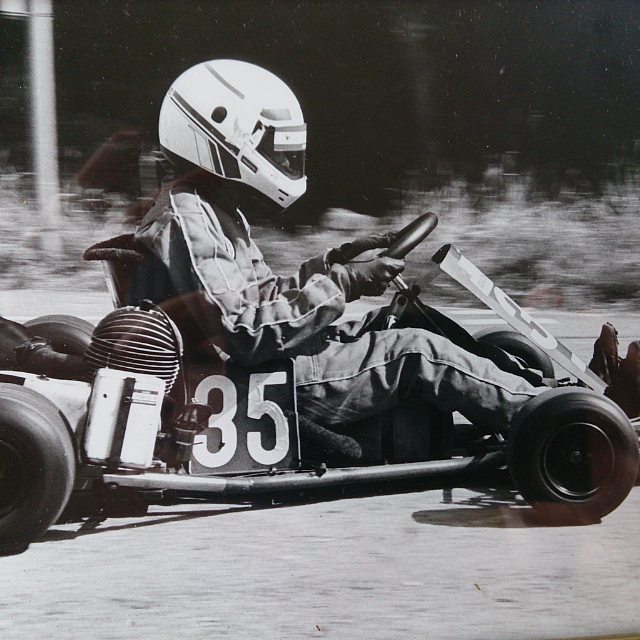
Geez he has super straight legs too, I would not be able to run a whole race that stretched out!
Good post Terence… and your book is radd too
I think the most important thing is… whatever you do in terms of posture, at least do it consistently. It’s a fundamental part of handling. If you’re trying to tune your chassis and you’re changing your posture as well, you’re going to have a bad time.
I’m an excessive over-leaner-outer. I’m blaming it on Fullerton and @Kieran_O_Carroll. I like the feel it gives me. Helps me feel really connected to the kart. Of course your tuning would probably be based around that. Having said that, I’m about 80lbs heavier now than when I started doing this, it’s hard on ribs.
look at Danny Formal and tell me what you think.
He is BRUTAL

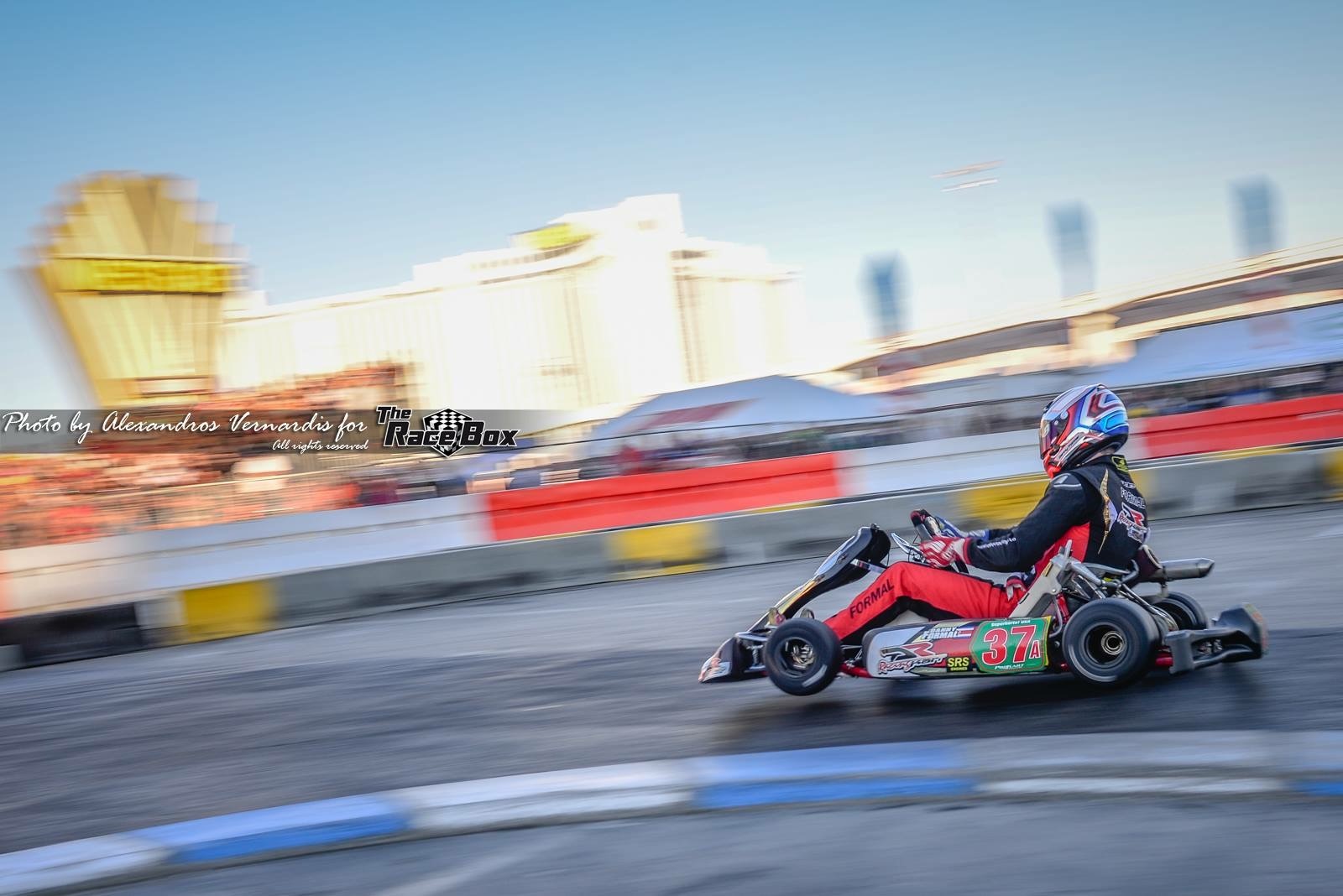
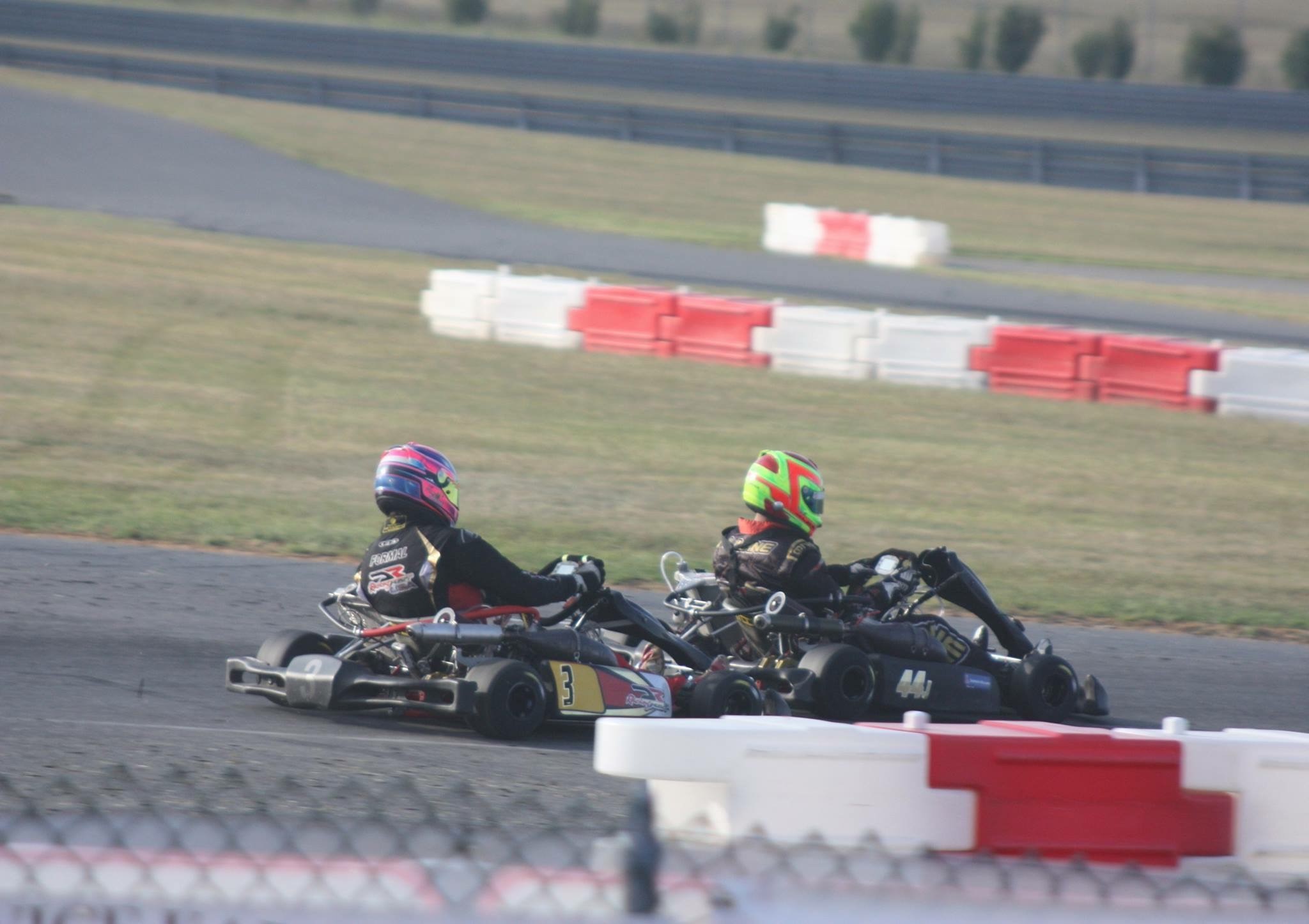

Yea but Danny is fast 
Danny works the chassis with his body more than anyone I’ve ever seen. Also helps he’s built like a tank and is really tall. And it works. He drives so hard… He destroys every curb and leans more than anyone. Great to watch, and he’s super fast.
Yeah I’m a fan of that kind of driving… Brutal I like!!